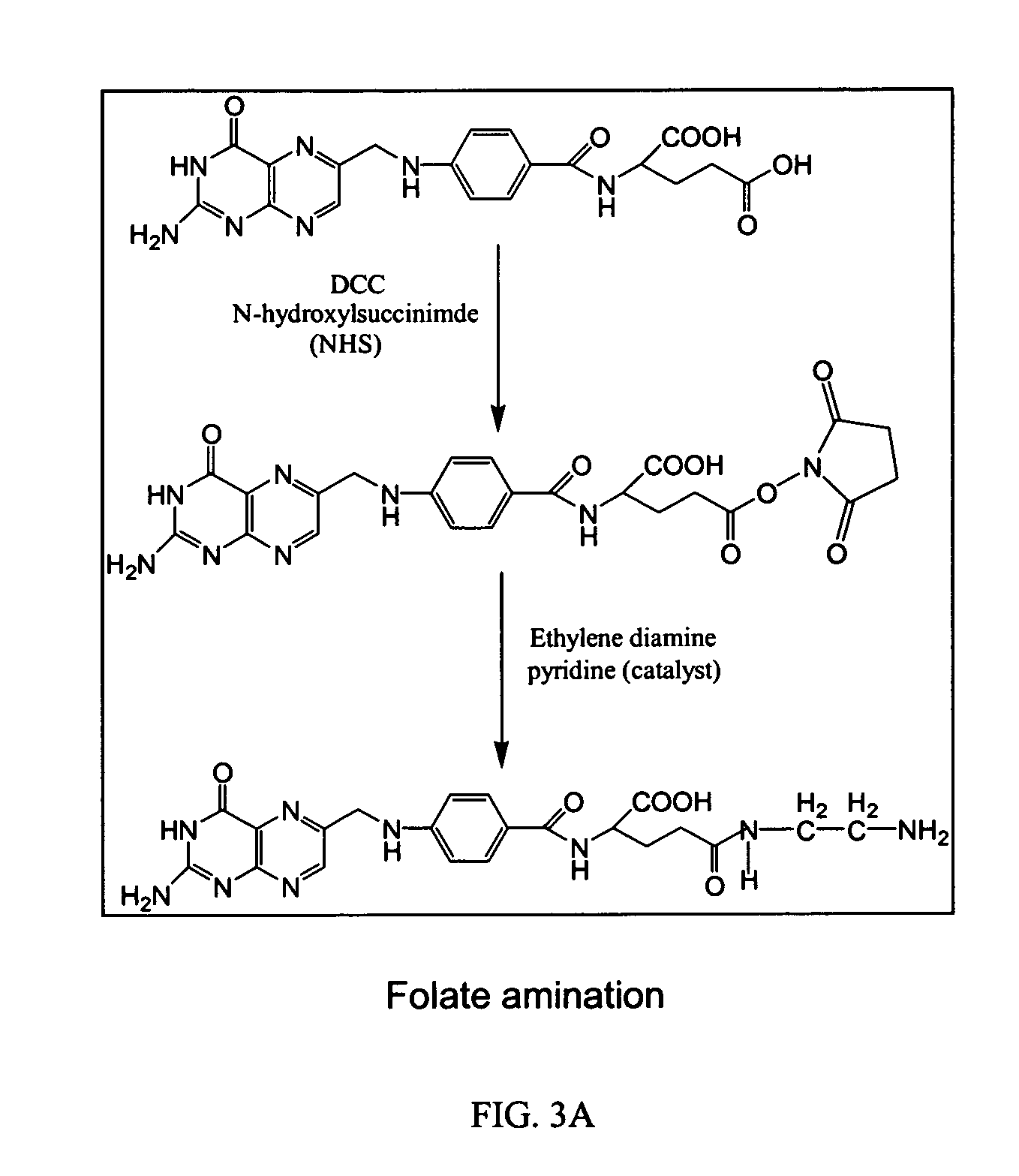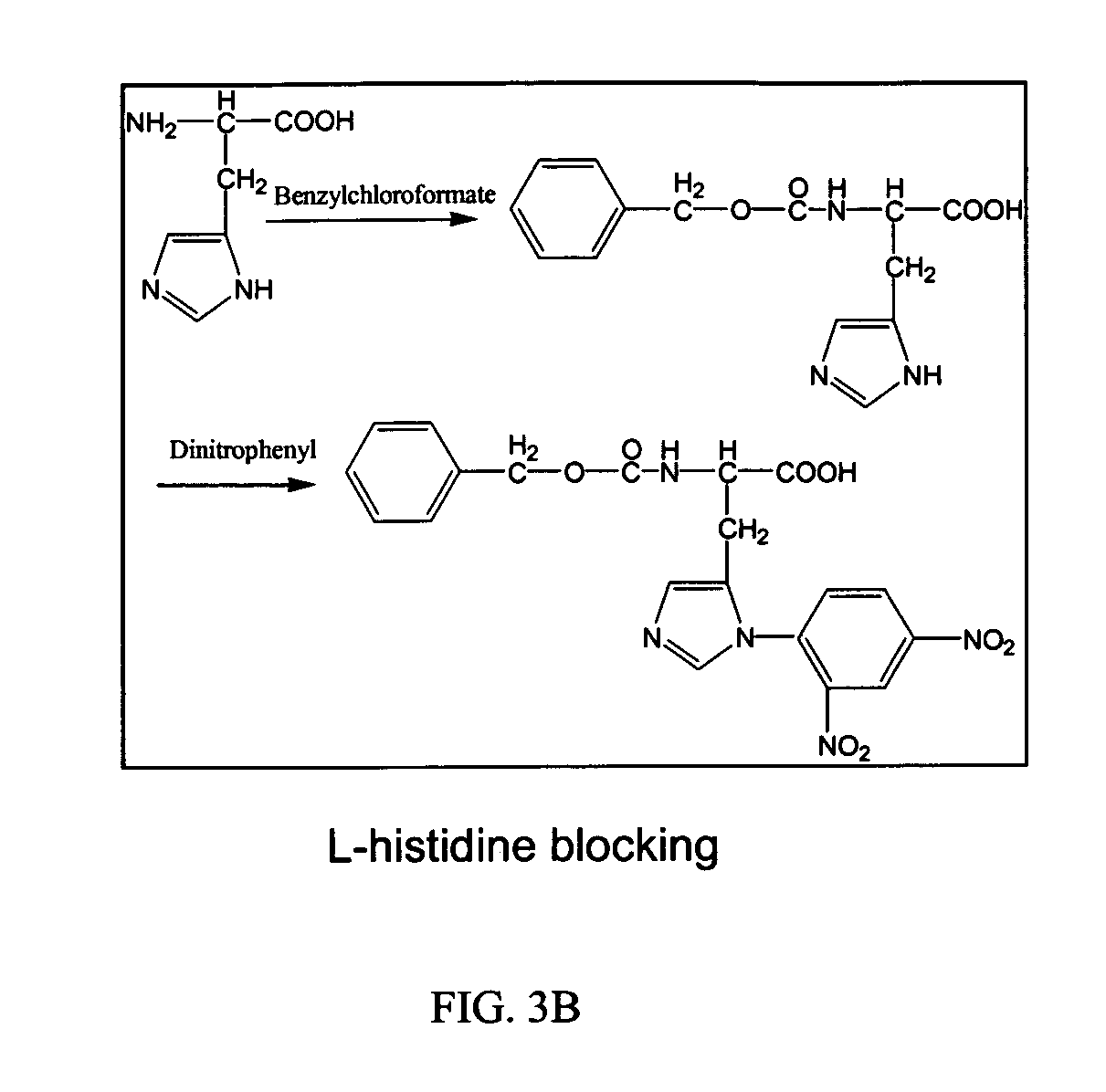Tumor environment-induced ligand-expressing nanocarrier system
a nanocarrier and tumor environment technology, applied in the direction of capsule delivery, microcapsules, biocide, etc., can solve the problems of rare tumor targeting of carriers with the moieties in vivo, lack of tumor selectivity, and inability to serve well as tumor-targeting moieties in vivo
- Summary
- Abstract
- Description
- Claims
- Application Information
AI Technical Summary
Benefits of technology
Problems solved by technology
Method used
Image
Examples
example 1
[0065] To demonstrate the invention, two vitamins (folate and biotin) were selected as ligands, and several micelle systems were prepared, as described below.
[0066] Carrier 1 comprised poly(His5K) / PEG2K block copolymer and PLLA3K / PEG2K (60:40 wt %) as a mixed micelle control. Such micelles had an average diameter of about 100 nm.
[0067] Carrier 2 comprised poly(His5K) / PEG2K and PLLA3K / PEG2K-folate (60:40 wt %) as a mixed micelle. Such micelles also had an average diameter of about 100 nm.
[0068] Carrier 3 comprised poly(His5K) / PEG2K and PLLA3K / PEG2K-poly(His1K)-folate (60:40 wt %) as a mixed micelle. Such micelles also had an average diameter of about 100 nm.
[0069] Carrier 4 comprised poly(His5K) / PEG2K and PLLA3K / PEG2K-poly(His1K)-biotin (60:40 wt %) as a mixed micelle. Such micelles also had an average diameter of about 100 nm.
[0070] Carrier 5 comprised PLLA3K / PEG2K and PLLA3K / PEG2K-poly(His1K)-biotin.
Synthesis of folate-poly(L-histidine)-PEG-PLLA
[0071] Histidine-NCA was synt...
PUM
| Property | Measurement | Unit |
|---|---|---|
| pH | aaaaa | aaaaa |
| pH | aaaaa | aaaaa |
| temperature | aaaaa | aaaaa |
Abstract
Description
Claims
Application Information
 Login to View More
Login to View More - R&D
- Intellectual Property
- Life Sciences
- Materials
- Tech Scout
- Unparalleled Data Quality
- Higher Quality Content
- 60% Fewer Hallucinations
Browse by: Latest US Patents, China's latest patents, Technical Efficacy Thesaurus, Application Domain, Technology Topic, Popular Technical Reports.
© 2025 PatSnap. All rights reserved.Legal|Privacy policy|Modern Slavery Act Transparency Statement|Sitemap|About US| Contact US: help@patsnap.com



